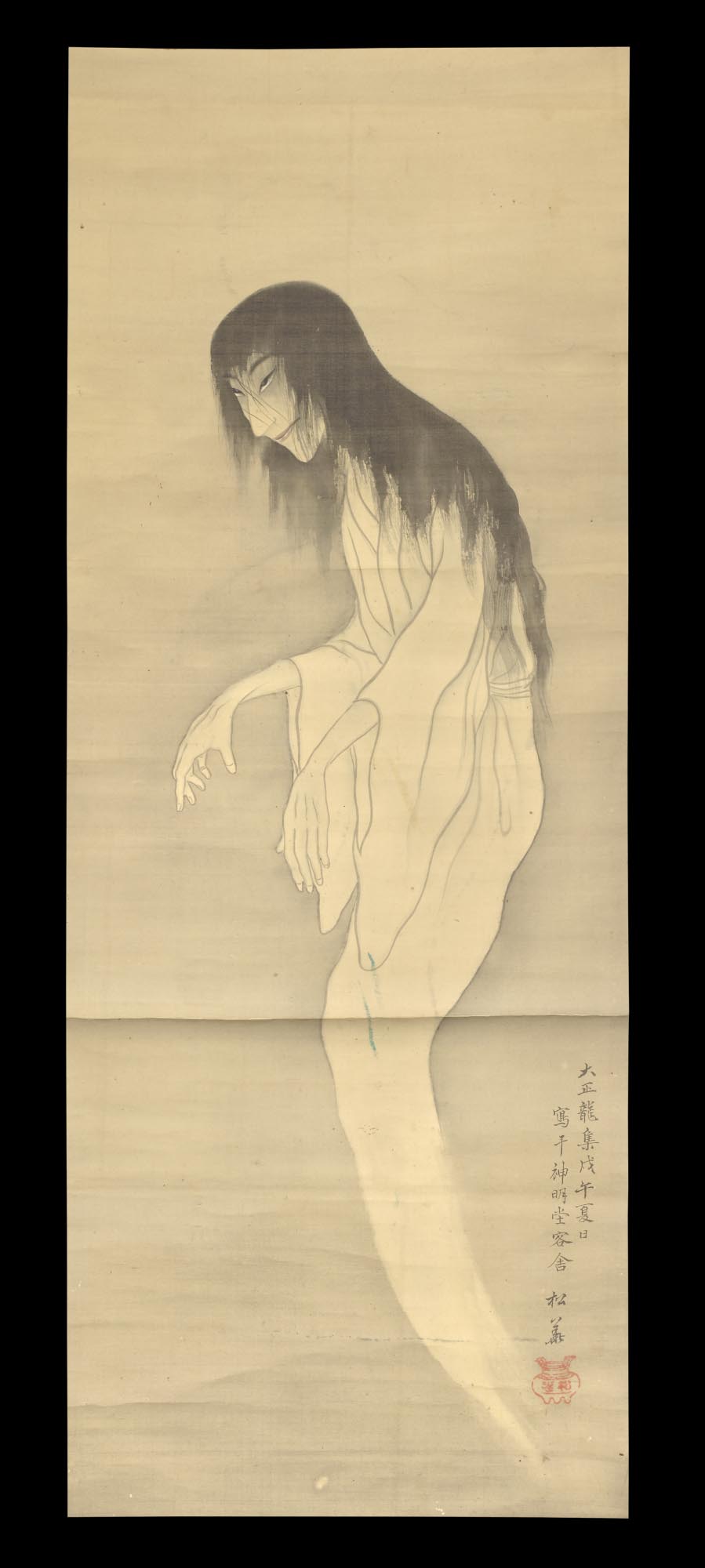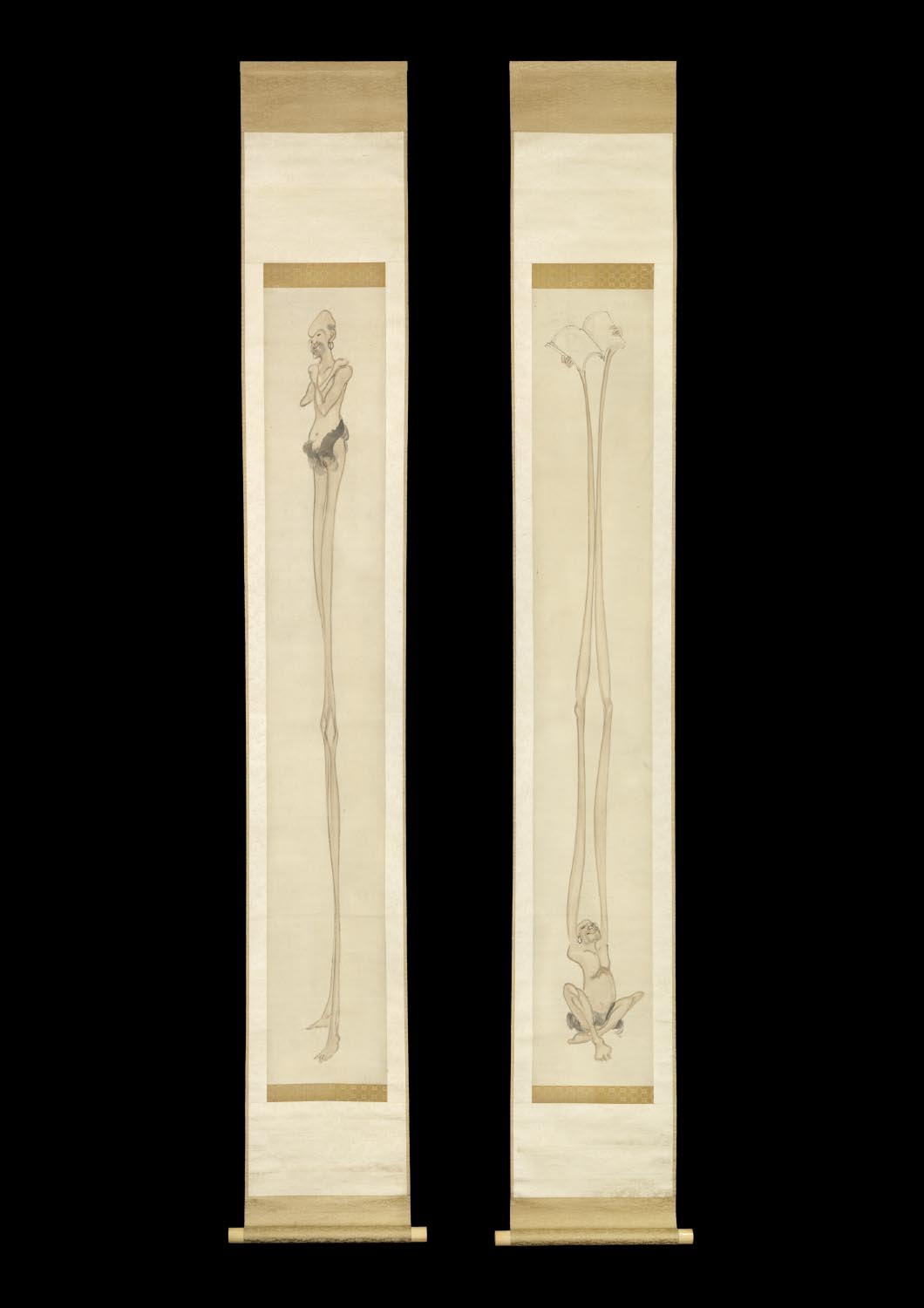Yūrei
Yamada Shoka / Paintings
- Sold
-
Material
Scroll, ink and colour on silk
-
Size
102 (h) × 39 cm [187 (h) × 52 cm]
-
Period
Dated: Summer Taishō 7 (1918)
-
Published
"Supranatural" by Galerie Mingei, 2018
Description
Yamada Shōka was born in Kyoto in 1868, the first year of Meiji. He was the pupil of famous Kyoto landscape and kachō-ga artist Suzuki Shonen (1849-1918). Shōka was a very
talented follower of his master and a very capable kachō-ga artist as well. The Japanese term kachō-ga refers to ukiyo-e woodblock prints that depict flowers and birds.
This painting has a very eerie quality. The woman ghost’s white katabira shroud is not worn in the hidari-mae manner. The term hidari-mae refers to a way of wearing a kimono in which the right side is over the left, and only the dead normally wear it that way.
This signifies that this ghost might still be present and actively haunting.
This yūrei might be the depiction in performance of a kabuki actor who was famous when Yamada Shōka painted this. The work demonstrates his skills in ink, which are especially apparent in his treatment of long dishevelled hair and the shadow it creates. The following is written on the scroll:
Taishō ryūshuū bogo (tsuchinoe-uma) kajitsu, Senjin meidō kyakusha nite utsusu, Shōka (Painted at the Senjin meido (“one thousand gods brilliant hall”), on a summer’s day in the year of tsuchinoto-uma of the Taishō period, by Shōka).
Seal: Shōka
Artist: Yamada Shōka (1868- ?)
Dated: Summer Taishō 7 (1918)

